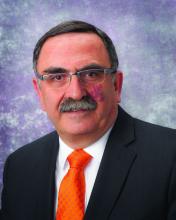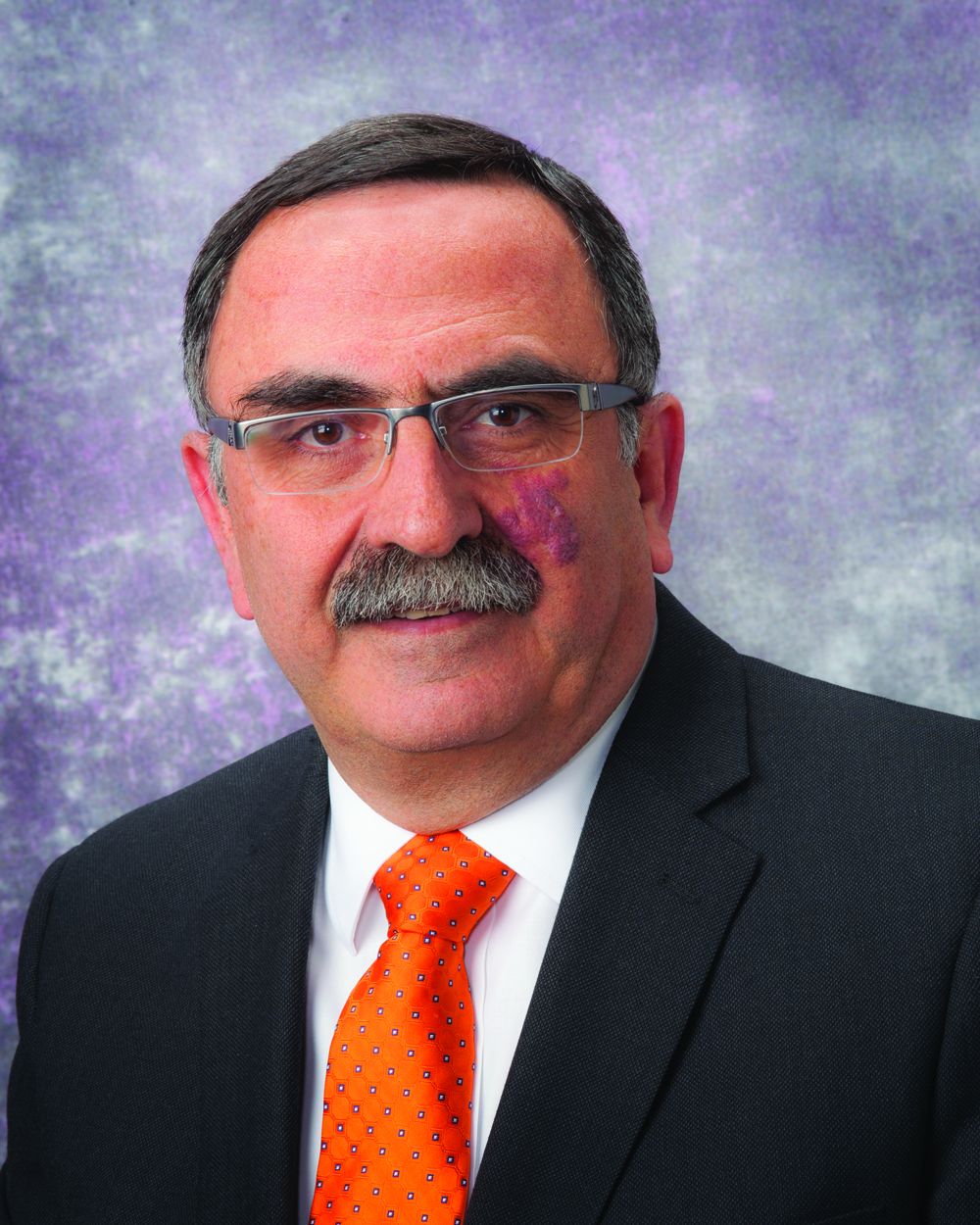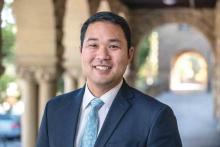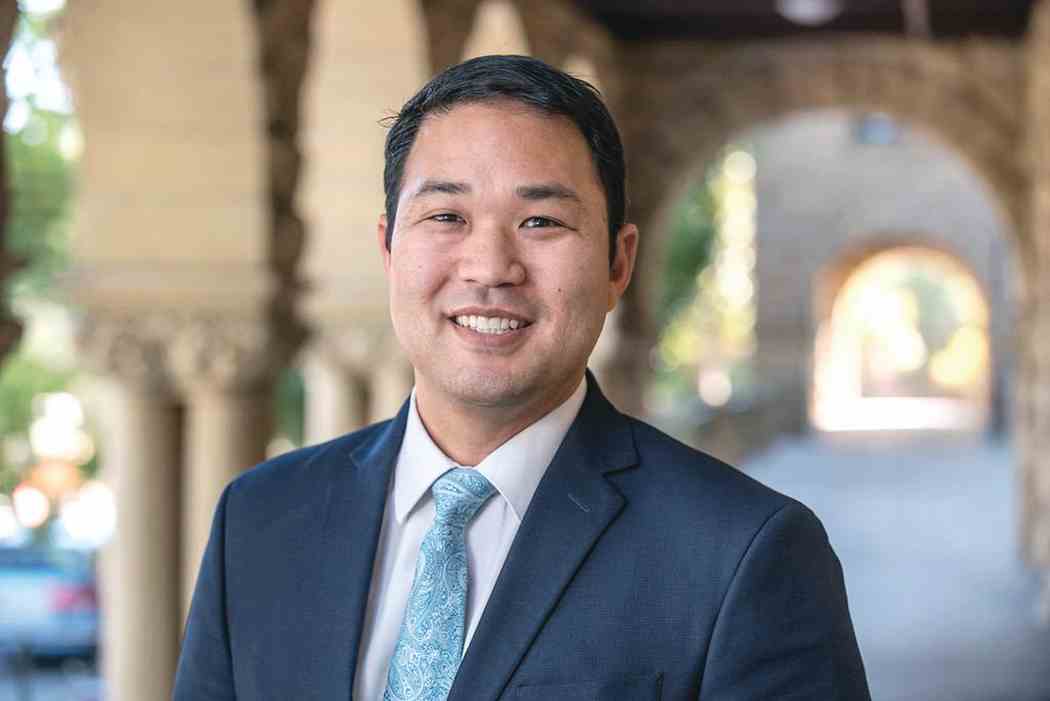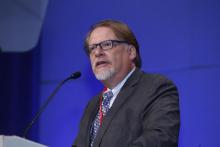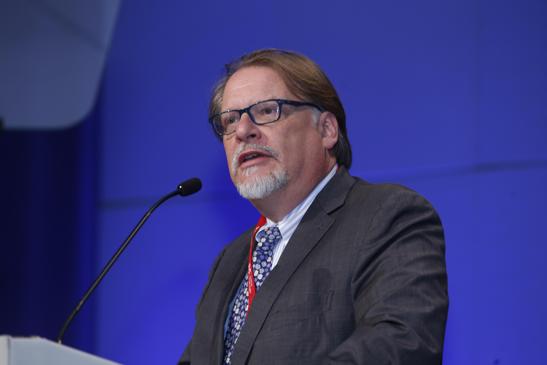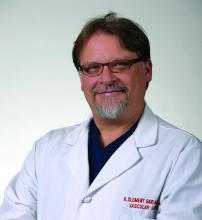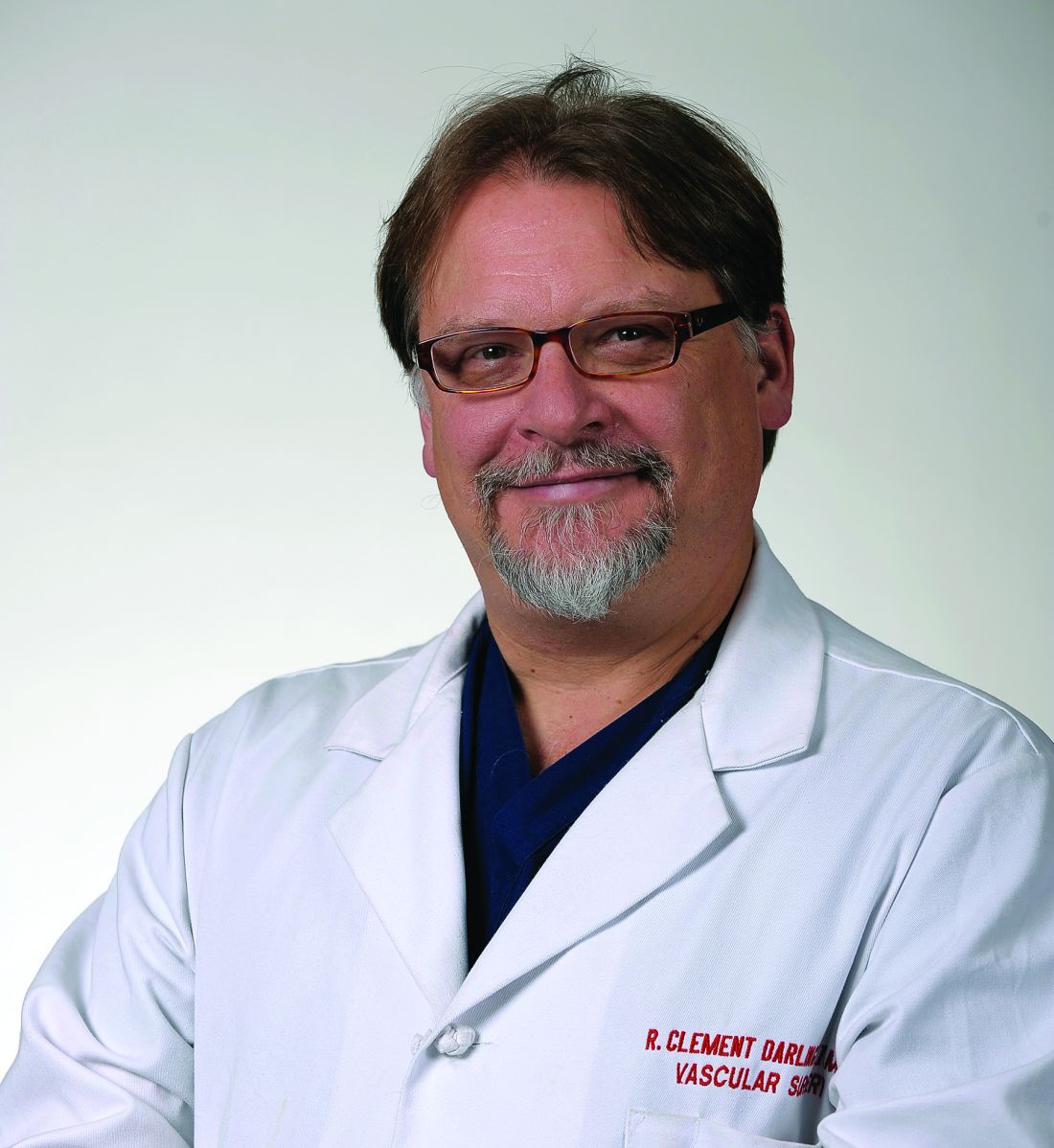User login
Learn About Starting a Vascular Training Program
Starting a vascular surgery integrated program or fellowship can be a daunting process. There exist a number of misconceptions about required case volume, program affiliations, and required number of faculty.
Requirements for creating such programs have recently been lightened. And the SVS and the Association of Program Directors in Vascular Surgery have a number of initiatives in place to help.
SVS will host an informational session for anyone interested in starting a program from 9:30 to 10:30 a.m. Friday, June 14, in National Harbor 4. Most of the session will be interactive, with experienced program directors offering participants useful information and practical advice.
Starting a vascular surgery integrated program or fellowship can be a daunting process. There exist a number of misconceptions about required case volume, program affiliations, and required number of faculty.
Requirements for creating such programs have recently been lightened. And the SVS and the Association of Program Directors in Vascular Surgery have a number of initiatives in place to help.
SVS will host an informational session for anyone interested in starting a program from 9:30 to 10:30 a.m. Friday, June 14, in National Harbor 4. Most of the session will be interactive, with experienced program directors offering participants useful information and practical advice.
Starting a vascular surgery integrated program or fellowship can be a daunting process. There exist a number of misconceptions about required case volume, program affiliations, and required number of faculty.
Requirements for creating such programs have recently been lightened. And the SVS and the Association of Program Directors in Vascular Surgery have a number of initiatives in place to help.
SVS will host an informational session for anyone interested in starting a program from 9:30 to 10:30 a.m. Friday, June 14, in National Harbor 4. Most of the session will be interactive, with experienced program directors offering participants useful information and practical advice.
From Our President
Society for Vascular Surgery President Michel S. Makaroun, MD, will reflect on his presidency during the 2019 Presidential Address, on Friday, June 14, from 11:15 a.m. to 12:15 p.m. President-Elect Kim Hodgson, MD, will introduce Dr. Makaroun, beginning at 11 a.m.
Dr. Makaroun is professor of surgery and clinical translational science at the University of Pittsburgh. He is the chair of vascular surgery and codirector of the University of Pittsburgh Medical Center Heart and Vascular Institute.
His address, “I am in Favor of Progress ... It is Change I Do Not Like,” will take place in Ballroom A/B.
Society for Vascular Surgery President Michel S. Makaroun, MD, will reflect on his presidency during the 2019 Presidential Address, on Friday, June 14, from 11:15 a.m. to 12:15 p.m. President-Elect Kim Hodgson, MD, will introduce Dr. Makaroun, beginning at 11 a.m.
Dr. Makaroun is professor of surgery and clinical translational science at the University of Pittsburgh. He is the chair of vascular surgery and codirector of the University of Pittsburgh Medical Center Heart and Vascular Institute.
His address, “I am in Favor of Progress ... It is Change I Do Not Like,” will take place in Ballroom A/B.
Society for Vascular Surgery President Michel S. Makaroun, MD, will reflect on his presidency during the 2019 Presidential Address, on Friday, June 14, from 11:15 a.m. to 12:15 p.m. President-Elect Kim Hodgson, MD, will introduce Dr. Makaroun, beginning at 11 a.m.
Dr. Makaroun is professor of surgery and clinical translational science at the University of Pittsburgh. He is the chair of vascular surgery and codirector of the University of Pittsburgh Medical Center Heart and Vascular Institute.
His address, “I am in Favor of Progress ... It is Change I Do Not Like,” will take place in Ballroom A/B.
PAD Patients at Risk for High Opioid Use
National efforts have intensified to reduce opioid prescriptions because of the opioid crisis. However, little is known about the relationship between peripheral arterial disease (PAD) and high-risk opioid use, according to Nathan K. Itoga, MD, of Stanford University, Calif. “As a vascular surgery resident, I wanted to know how I could do my part in reducing opioid prescriptions. However, I didn’t know if vascular patients were at risk for high opioid use. The impetus for this study was the lack of studies regarding opioid use in patients with vascular disease,” said Dr. Itoga.
Dr. Itoga will present a study in Thursday’s Scientific Session 2 that he and his colleagues performed to evaluate the relationship between PAD and high opioid use and to assess whether PAD treatment impacts high opioid use.
The researchers used the 2007-2015 Truven Marketscan database, a deidentified national private insurance claims database, to identify patients with 2 ICD-9 diagnosis codes of PAD 2 months apart with at least 2 years of continuous enrollment. Critical limb ischemia (CLI) was defined as rest pain, ulcers, or gangrene.
“Our primary outcome was high opioid use, defined as 2 opioid prescriptions within a 1-year period,” said Dr. Itoga. Opioid prescriptions were excluded if filled within 90 days of a PAD-related procedure, as identified by CPT codes for lower extremity open/endovascular revascularization or amputation. A total of 182,186 patients with PAD met the inclusion criteria, 27.1% of whom had CLI. The mean follow-up was 5.29 years. An average of 24.4% of patients with PAD met the high opioid use criteria in any given calendar year, with a significant decreasing trend for patients meeting criteria beginning in 2010 (P less than .01), said Dr. Itoga. Among the high opioid users, 26.0% continued to meet the criteria for 5 years. High opioid use was found to be significantly more common for patients with CLI (32.2%) compared to PAD patients without CLI (vs. 21.4%). During years of high opioid use, an average of 5.9 yearly prescriptions was filled.
According to multivariate analysis, illicit drug use and back pain were the strongest significant predictors of high opioid use (P less than .001).
A new diagnosis of PAD significantly increased the incidence of high opioid use (21.3% before PAD diagnosis vs. 26.9% after diagnosis, P less than .01). This association with a new diagnosis of CLI increased high opioid use from 27.5% before CLI diagnosis to 37.7% after CLI diagnosis (P less than .01), highlighting the increased risk in this patient population. A total of 45,028 patients (24.7%) underwent 88,229 PAD-related procedures. After exclusion of periprocedural opioid prescriptions (18% of all opioid prescriptions), the yearly percentage of high opioid users increased from 25.6% pretreatment to 29.2% post treatment, also a significant difference (P less than .01).
“Our research shows that patients with PAD are at increased risk for high opioid use, with nearly one-quarter meeting described criteria. CLI additionally increases opioid utilization, and treatment of PAD does not appear to decrease high opioid use,” he said. “In addition to heightened awareness and active opioid management, our findings warrant further investigation into causes and deterrence of high-risk opioid use,” Dr. Itoga concluded.
Thursday, June 21, 2018
1:30 - 3:00 p.m.
HCC, Ballroom A/B
S2: Scientific Session 2
National efforts have intensified to reduce opioid prescriptions because of the opioid crisis. However, little is known about the relationship between peripheral arterial disease (PAD) and high-risk opioid use, according to Nathan K. Itoga, MD, of Stanford University, Calif. “As a vascular surgery resident, I wanted to know how I could do my part in reducing opioid prescriptions. However, I didn’t know if vascular patients were at risk for high opioid use. The impetus for this study was the lack of studies regarding opioid use in patients with vascular disease,” said Dr. Itoga.
Dr. Itoga will present a study in Thursday’s Scientific Session 2 that he and his colleagues performed to evaluate the relationship between PAD and high opioid use and to assess whether PAD treatment impacts high opioid use.
The researchers used the 2007-2015 Truven Marketscan database, a deidentified national private insurance claims database, to identify patients with 2 ICD-9 diagnosis codes of PAD 2 months apart with at least 2 years of continuous enrollment. Critical limb ischemia (CLI) was defined as rest pain, ulcers, or gangrene.
“Our primary outcome was high opioid use, defined as 2 opioid prescriptions within a 1-year period,” said Dr. Itoga. Opioid prescriptions were excluded if filled within 90 days of a PAD-related procedure, as identified by CPT codes for lower extremity open/endovascular revascularization or amputation. A total of 182,186 patients with PAD met the inclusion criteria, 27.1% of whom had CLI. The mean follow-up was 5.29 years. An average of 24.4% of patients with PAD met the high opioid use criteria in any given calendar year, with a significant decreasing trend for patients meeting criteria beginning in 2010 (P less than .01), said Dr. Itoga. Among the high opioid users, 26.0% continued to meet the criteria for 5 years. High opioid use was found to be significantly more common for patients with CLI (32.2%) compared to PAD patients without CLI (vs. 21.4%). During years of high opioid use, an average of 5.9 yearly prescriptions was filled.
According to multivariate analysis, illicit drug use and back pain were the strongest significant predictors of high opioid use (P less than .001).
A new diagnosis of PAD significantly increased the incidence of high opioid use (21.3% before PAD diagnosis vs. 26.9% after diagnosis, P less than .01). This association with a new diagnosis of CLI increased high opioid use from 27.5% before CLI diagnosis to 37.7% after CLI diagnosis (P less than .01), highlighting the increased risk in this patient population. A total of 45,028 patients (24.7%) underwent 88,229 PAD-related procedures. After exclusion of periprocedural opioid prescriptions (18% of all opioid prescriptions), the yearly percentage of high opioid users increased from 25.6% pretreatment to 29.2% post treatment, also a significant difference (P less than .01).
“Our research shows that patients with PAD are at increased risk for high opioid use, with nearly one-quarter meeting described criteria. CLI additionally increases opioid utilization, and treatment of PAD does not appear to decrease high opioid use,” he said. “In addition to heightened awareness and active opioid management, our findings warrant further investigation into causes and deterrence of high-risk opioid use,” Dr. Itoga concluded.
Thursday, June 21, 2018
1:30 - 3:00 p.m.
HCC, Ballroom A/B
S2: Scientific Session 2
National efforts have intensified to reduce opioid prescriptions because of the opioid crisis. However, little is known about the relationship between peripheral arterial disease (PAD) and high-risk opioid use, according to Nathan K. Itoga, MD, of Stanford University, Calif. “As a vascular surgery resident, I wanted to know how I could do my part in reducing opioid prescriptions. However, I didn’t know if vascular patients were at risk for high opioid use. The impetus for this study was the lack of studies regarding opioid use in patients with vascular disease,” said Dr. Itoga.
Dr. Itoga will present a study in Thursday’s Scientific Session 2 that he and his colleagues performed to evaluate the relationship between PAD and high opioid use and to assess whether PAD treatment impacts high opioid use.
The researchers used the 2007-2015 Truven Marketscan database, a deidentified national private insurance claims database, to identify patients with 2 ICD-9 diagnosis codes of PAD 2 months apart with at least 2 years of continuous enrollment. Critical limb ischemia (CLI) was defined as rest pain, ulcers, or gangrene.
“Our primary outcome was high opioid use, defined as 2 opioid prescriptions within a 1-year period,” said Dr. Itoga. Opioid prescriptions were excluded if filled within 90 days of a PAD-related procedure, as identified by CPT codes for lower extremity open/endovascular revascularization or amputation. A total of 182,186 patients with PAD met the inclusion criteria, 27.1% of whom had CLI. The mean follow-up was 5.29 years. An average of 24.4% of patients with PAD met the high opioid use criteria in any given calendar year, with a significant decreasing trend for patients meeting criteria beginning in 2010 (P less than .01), said Dr. Itoga. Among the high opioid users, 26.0% continued to meet the criteria for 5 years. High opioid use was found to be significantly more common for patients with CLI (32.2%) compared to PAD patients without CLI (vs. 21.4%). During years of high opioid use, an average of 5.9 yearly prescriptions was filled.
According to multivariate analysis, illicit drug use and back pain were the strongest significant predictors of high opioid use (P less than .001).
A new diagnosis of PAD significantly increased the incidence of high opioid use (21.3% before PAD diagnosis vs. 26.9% after diagnosis, P less than .01). This association with a new diagnosis of CLI increased high opioid use from 27.5% before CLI diagnosis to 37.7% after CLI diagnosis (P less than .01), highlighting the increased risk in this patient population. A total of 45,028 patients (24.7%) underwent 88,229 PAD-related procedures. After exclusion of periprocedural opioid prescriptions (18% of all opioid prescriptions), the yearly percentage of high opioid users increased from 25.6% pretreatment to 29.2% post treatment, also a significant difference (P less than .01).
“Our research shows that patients with PAD are at increased risk for high opioid use, with nearly one-quarter meeting described criteria. CLI additionally increases opioid utilization, and treatment of PAD does not appear to decrease high opioid use,” he said. “In addition to heightened awareness and active opioid management, our findings warrant further investigation into causes and deterrence of high-risk opioid use,” Dr. Itoga concluded.
Thursday, June 21, 2018
1:30 - 3:00 p.m.
HCC, Ballroom A/B
S2: Scientific Session 2
Crawford Forum Tackles the Value-Based Future
Rather than choosing a technical issue to address, “I feel it is much more important for us to know the mechanisms of payment systems and how the new world order is going to transpire,” said R. Clement Darling, III, MD, in his introduction to the 2017 E. Stanley Crawford Critical Issues Forum.
Each year, the Vascular Annual Meeting is highlighted by the Forum, which is moderated and organized by the incoming SVS president. This year, Dr. Darling, of the Albany Medical College, assembled four speakers from a variety of disciplines to address “How to Navigate a Value-Based Reimbursement System: What You Need to Know.”
Michael C. Dalsing, MD, of the Indiana University School of Medicine discussed what vascular specialists needed to know about MACRA (Medicare Access and CHIP Reauthorization Act), and how to “compete and flourish” in a world of alternative payment systems. He pointed out that whatever happens to the Affordable Care Act in Washington, MACRA is here to stay because it replaces the former Sustainable Growth Rate (SGR), and deals with “how” to pay, not “who” pays. Physicians will have to be involved with either a MIPS (Merit-based Incentive Payment System) or an APM (Alternative Payment Model) in order to benefit. Those who do nothing will see a 4% decrease in 2019.
Daniel Gorin, MD, of Hyannis, Mass., addressed the issue of fitting the outpatient angio suite into the new world order. He said that it is not just a matter of how to deliver appropriate care and ensure that the right patients are operated on for the right reasons, but also to make sure that outpatient endovascular centers received appropriate accreditation, as they are here to stay and are very popular with patients. He pointed out that accreditation is only mandated in 30 states, but that even those states have few standards regarding that accreditation. He said that proper patient care will need to rely on the development of evidence-based care guidelines developed for patients in angio suites and for valid organizations, such as the Outpatient Endovascular Interventional Society, to be placed in charge of that accreditation.
John (Jeb) Hallett, MD, discussed the role of outcome registries in the future of vascular specialists now and in the future. He talked about whether they should be seen as necessary evils or useful tools. “What we measure is what we can change,” said Dr. Hallett*, pointing out that this is important in the new world of value-based care, where by 2022, “A+” physicians will receive a 9% increase in compensation, whereas the “F” performers will get a 9% decrease.
Finishing up the program, Anton Sidawy, MD, of George Washington University, addressed the overarching issue of regionalization and center accreditation, and how the continuous quality model can be applied to vascular medicine. One of the most important issues is how to make sure that vascular surgeons are proactive in taking control of the quality development and assurance process rather than having it taken over by other groups such as the government, insurers, or patient advocacy groups. He discussed how SVS is in preliminary discussion with the American College of Surgeons, which has developed many of these groups successfully with other professional societies, in order to create a potential new model for the vascular specialty. “Reforms need realistic input, which is best gotten from experts in the field. That’s us. So we need to be involved and participate in the process. Payment for physician services is moving from fee for service to payment for value, quality and efficiency, and we need to define value. This is one way to do it,” Dr. Sidawy concluded.
*Correction, 6/2/17. An earlier version of the article misattributed this quote.
Rather than choosing a technical issue to address, “I feel it is much more important for us to know the mechanisms of payment systems and how the new world order is going to transpire,” said R. Clement Darling, III, MD, in his introduction to the 2017 E. Stanley Crawford Critical Issues Forum.
Each year, the Vascular Annual Meeting is highlighted by the Forum, which is moderated and organized by the incoming SVS president. This year, Dr. Darling, of the Albany Medical College, assembled four speakers from a variety of disciplines to address “How to Navigate a Value-Based Reimbursement System: What You Need to Know.”
Michael C. Dalsing, MD, of the Indiana University School of Medicine discussed what vascular specialists needed to know about MACRA (Medicare Access and CHIP Reauthorization Act), and how to “compete and flourish” in a world of alternative payment systems. He pointed out that whatever happens to the Affordable Care Act in Washington, MACRA is here to stay because it replaces the former Sustainable Growth Rate (SGR), and deals with “how” to pay, not “who” pays. Physicians will have to be involved with either a MIPS (Merit-based Incentive Payment System) or an APM (Alternative Payment Model) in order to benefit. Those who do nothing will see a 4% decrease in 2019.
Daniel Gorin, MD, of Hyannis, Mass., addressed the issue of fitting the outpatient angio suite into the new world order. He said that it is not just a matter of how to deliver appropriate care and ensure that the right patients are operated on for the right reasons, but also to make sure that outpatient endovascular centers received appropriate accreditation, as they are here to stay and are very popular with patients. He pointed out that accreditation is only mandated in 30 states, but that even those states have few standards regarding that accreditation. He said that proper patient care will need to rely on the development of evidence-based care guidelines developed for patients in angio suites and for valid organizations, such as the Outpatient Endovascular Interventional Society, to be placed in charge of that accreditation.
John (Jeb) Hallett, MD, discussed the role of outcome registries in the future of vascular specialists now and in the future. He talked about whether they should be seen as necessary evils or useful tools. “What we measure is what we can change,” said Dr. Hallett*, pointing out that this is important in the new world of value-based care, where by 2022, “A+” physicians will receive a 9% increase in compensation, whereas the “F” performers will get a 9% decrease.
Finishing up the program, Anton Sidawy, MD, of George Washington University, addressed the overarching issue of regionalization and center accreditation, and how the continuous quality model can be applied to vascular medicine. One of the most important issues is how to make sure that vascular surgeons are proactive in taking control of the quality development and assurance process rather than having it taken over by other groups such as the government, insurers, or patient advocacy groups. He discussed how SVS is in preliminary discussion with the American College of Surgeons, which has developed many of these groups successfully with other professional societies, in order to create a potential new model for the vascular specialty. “Reforms need realistic input, which is best gotten from experts in the field. That’s us. So we need to be involved and participate in the process. Payment for physician services is moving from fee for service to payment for value, quality and efficiency, and we need to define value. This is one way to do it,” Dr. Sidawy concluded.
*Correction, 6/2/17. An earlier version of the article misattributed this quote.
Rather than choosing a technical issue to address, “I feel it is much more important for us to know the mechanisms of payment systems and how the new world order is going to transpire,” said R. Clement Darling, III, MD, in his introduction to the 2017 E. Stanley Crawford Critical Issues Forum.
Each year, the Vascular Annual Meeting is highlighted by the Forum, which is moderated and organized by the incoming SVS president. This year, Dr. Darling, of the Albany Medical College, assembled four speakers from a variety of disciplines to address “How to Navigate a Value-Based Reimbursement System: What You Need to Know.”
Michael C. Dalsing, MD, of the Indiana University School of Medicine discussed what vascular specialists needed to know about MACRA (Medicare Access and CHIP Reauthorization Act), and how to “compete and flourish” in a world of alternative payment systems. He pointed out that whatever happens to the Affordable Care Act in Washington, MACRA is here to stay because it replaces the former Sustainable Growth Rate (SGR), and deals with “how” to pay, not “who” pays. Physicians will have to be involved with either a MIPS (Merit-based Incentive Payment System) or an APM (Alternative Payment Model) in order to benefit. Those who do nothing will see a 4% decrease in 2019.
Daniel Gorin, MD, of Hyannis, Mass., addressed the issue of fitting the outpatient angio suite into the new world order. He said that it is not just a matter of how to deliver appropriate care and ensure that the right patients are operated on for the right reasons, but also to make sure that outpatient endovascular centers received appropriate accreditation, as they are here to stay and are very popular with patients. He pointed out that accreditation is only mandated in 30 states, but that even those states have few standards regarding that accreditation. He said that proper patient care will need to rely on the development of evidence-based care guidelines developed for patients in angio suites and for valid organizations, such as the Outpatient Endovascular Interventional Society, to be placed in charge of that accreditation.
John (Jeb) Hallett, MD, discussed the role of outcome registries in the future of vascular specialists now and in the future. He talked about whether they should be seen as necessary evils or useful tools. “What we measure is what we can change,” said Dr. Hallett*, pointing out that this is important in the new world of value-based care, where by 2022, “A+” physicians will receive a 9% increase in compensation, whereas the “F” performers will get a 9% decrease.
Finishing up the program, Anton Sidawy, MD, of George Washington University, addressed the overarching issue of regionalization and center accreditation, and how the continuous quality model can be applied to vascular medicine. One of the most important issues is how to make sure that vascular surgeons are proactive in taking control of the quality development and assurance process rather than having it taken over by other groups such as the government, insurers, or patient advocacy groups. He discussed how SVS is in preliminary discussion with the American College of Surgeons, which has developed many of these groups successfully with other professional societies, in order to create a potential new model for the vascular specialty. “Reforms need realistic input, which is best gotten from experts in the field. That’s us. So we need to be involved and participate in the process. Payment for physician services is moving from fee for service to payment for value, quality and efficiency, and we need to define value. This is one way to do it,” Dr. Sidawy concluded.
*Correction, 6/2/17. An earlier version of the article misattributed this quote.
Before the Parade Passes By, Be Sure to Cross the Street
Are we in Pamplona, Spain, or San Diego, California?
The differences might blur Saturday morning; it won’t be Pamplona’s running of the bulls in front of the San Diego Convention Center, but a cattle drive of long-horned cattle. And this frontier drive may create a few difficulties getting to and from the Vascular Annual Meeting.
The cattle will travel on Harbor Drive, the street directly in front of the San Diego Convention Center, VAM’s home and the VAM headquarters hotel, the Marriot Marquis San Diego Marina.
The route will affect the ability to cross Harbor Drive (from other hotels, for example) and will delay anyone attempting to leave the Marriott via car or taxi while the parade is passing by.
For those staying in San Diego after VAM, the fair opens June 2 and runs through July 4. Fun includes panning for gold, a Wild West saloon with an old-fashioned player piano, and chance encounters with notorious outlaws such as Jesse James and Black Bart.
Are we in Pamplona, Spain, or San Diego, California?
The differences might blur Saturday morning; it won’t be Pamplona’s running of the bulls in front of the San Diego Convention Center, but a cattle drive of long-horned cattle. And this frontier drive may create a few difficulties getting to and from the Vascular Annual Meeting.
The cattle will travel on Harbor Drive, the street directly in front of the San Diego Convention Center, VAM’s home and the VAM headquarters hotel, the Marriot Marquis San Diego Marina.
The route will affect the ability to cross Harbor Drive (from other hotels, for example) and will delay anyone attempting to leave the Marriott via car or taxi while the parade is passing by.
For those staying in San Diego after VAM, the fair opens June 2 and runs through July 4. Fun includes panning for gold, a Wild West saloon with an old-fashioned player piano, and chance encounters with notorious outlaws such as Jesse James and Black Bart.
Are we in Pamplona, Spain, or San Diego, California?
The differences might blur Saturday morning; it won’t be Pamplona’s running of the bulls in front of the San Diego Convention Center, but a cattle drive of long-horned cattle. And this frontier drive may create a few difficulties getting to and from the Vascular Annual Meeting.
The cattle will travel on Harbor Drive, the street directly in front of the San Diego Convention Center, VAM’s home and the VAM headquarters hotel, the Marriot Marquis San Diego Marina.
The route will affect the ability to cross Harbor Drive (from other hotels, for example) and will delay anyone attempting to leave the Marriott via car or taxi while the parade is passing by.
For those staying in San Diego after VAM, the fair opens June 2 and runs through July 4. Fun includes panning for gold, a Wild West saloon with an old-fashioned player piano, and chance encounters with notorious outlaws such as Jesse James and Black Bart.
E. Stanley Crawford Critical Issues Forum Tackles Value-Based Reimbursement
Vascular surgeons will learn how to navigate a value-based reimbursement system at the E. Stanley Crawford Critical Issues Forum on Thursday, June 1, from 10:30 a.m. to noon. This informative session, moderated by R. Clement Darling III, MD, of The Vascular Group in Albany, N.Y., will include an excellent panel of experts in the field.
“As everyone knows, the Affordable Care Act (ACA) will continue to be under serious discussion in the new administration, and we don’t know how it will affect our practices,” said Dr. Darling. “However, MACRA, MIPS, and alternative payment systems were decided on in a bipartisan fashion, so change in our reimbursement system is here to stay.”
The Forum will begin with a presentation by Michael C. Dalsing, MD, of Indiana University about “The Five Things We All Need to Know about MACRA and Alternative Payment Systems to Compete and Flourish.” MACRA – the Medicare Access and CHIP Reauthorization Act of 2015 – went into effect on January 1, 2017.
“It is extremely important for all vascular surgeons and health care professionals to participate in order to not be negatively affected by this rule,” noted Dr. Darling,
The next talk will be “Appropriate Care in Outpatient Angio Suites: How Do We Ensure the Correct Procedures Get Done on the Right Patients for the Right Reasons?” Daniel R. Gorin, MD, of Cape Cod Health Care, will cover this very important issue in current outpatient treatment of patients with venous and arterial disease. These suites have been well received by the public and third party payers; however, we may need to be involved with their accreditation to minimize the potential or perception of inappropriate indications or procedures. “A year and one-half ago,” said Dr. Darling, “Peter Lawrence talked about the increase in outpatient angio suites in his excellent SVS Presidential address.”
“I think this presentation will be absorbing and controversial for both those who are contemplating outpatient angio suites and those who are working in one,” continued Dr. Darling. “We need to police ourselves. It may be incumbent upon us to be the accreditation body that actively participates in ensuring that we are giving our patients the best and most appropriate care possible.”
An integral part of MACRA and value-based reimbursement systems is outcomes. The SVS Vascular Quality Initiative (VQI) has become a hot topic for many vascular surgeons whether they work for academic institutions, in a hospital, in multi-specialty practices, or independently.
Since MACRA and the alternative payment system include involvement with registries, the next subject will be “Outcome Registries – Necessary Evil or Useful Tool of the Future: How to Make Them Work in Your Practice” discussed by John “Jeb” Hallett, MD, of the Medical University of South Carolina. “This presentation will enlighten attendees on how to incorporate outcome registries into their daily lives,” noted Dr. Darling.
The final talk will be “Can Everyone Do It All? Regionalization and Center Accreditation: How to Make It Work for All of Us” by Anton Sidawy, MD, of GW Medical Faculty Associates and SVS Past President. “This is a fascinating topic, which should generate a fair amount of discussion,” noted Dr. Darling. “We are all aware that there is an extensive trauma center designation in this country that has helped improve mortality and patient care. Yet, for patients with vascular emergencies, recent data have shown regionalization can positively impact outcome and many patients do not suffer from transfer.” This complex problem will be analyzed from all perspectives.
“We hope that the SVS can be on the forefront of creating systems that benefit patient outcomes while maintaining excellent regional doctor/patient relationships,” stated Dr. Darling. “We will again look at the opportunity for SVS involvement in center accreditation – allowing us to maintain our preeminent position as the physicians who can best treat vascular, arterial, and venous emergencies and any vascular surgery pathology.”
The Crawford Critical Issues Forum will delve into very interesting and controversial subjects,” stated Dr. Darling. “We hope that physicians will attend the session and provide us with their input and thoughts on these critical issues.”
Dr. Darling does not have any financial conflicts of interest.
Thursday, June 1
10:30 a.m. – Noon
The E. Stanley Crawford Critical Issues Forum
Vascular surgeons will learn how to navigate a value-based reimbursement system at the E. Stanley Crawford Critical Issues Forum on Thursday, June 1, from 10:30 a.m. to noon. This informative session, moderated by R. Clement Darling III, MD, of The Vascular Group in Albany, N.Y., will include an excellent panel of experts in the field.
“As everyone knows, the Affordable Care Act (ACA) will continue to be under serious discussion in the new administration, and we don’t know how it will affect our practices,” said Dr. Darling. “However, MACRA, MIPS, and alternative payment systems were decided on in a bipartisan fashion, so change in our reimbursement system is here to stay.”
The Forum will begin with a presentation by Michael C. Dalsing, MD, of Indiana University about “The Five Things We All Need to Know about MACRA and Alternative Payment Systems to Compete and Flourish.” MACRA – the Medicare Access and CHIP Reauthorization Act of 2015 – went into effect on January 1, 2017.
“It is extremely important for all vascular surgeons and health care professionals to participate in order to not be negatively affected by this rule,” noted Dr. Darling,
The next talk will be “Appropriate Care in Outpatient Angio Suites: How Do We Ensure the Correct Procedures Get Done on the Right Patients for the Right Reasons?” Daniel R. Gorin, MD, of Cape Cod Health Care, will cover this very important issue in current outpatient treatment of patients with venous and arterial disease. These suites have been well received by the public and third party payers; however, we may need to be involved with their accreditation to minimize the potential or perception of inappropriate indications or procedures. “A year and one-half ago,” said Dr. Darling, “Peter Lawrence talked about the increase in outpatient angio suites in his excellent SVS Presidential address.”
“I think this presentation will be absorbing and controversial for both those who are contemplating outpatient angio suites and those who are working in one,” continued Dr. Darling. “We need to police ourselves. It may be incumbent upon us to be the accreditation body that actively participates in ensuring that we are giving our patients the best and most appropriate care possible.”
An integral part of MACRA and value-based reimbursement systems is outcomes. The SVS Vascular Quality Initiative (VQI) has become a hot topic for many vascular surgeons whether they work for academic institutions, in a hospital, in multi-specialty practices, or independently.
Since MACRA and the alternative payment system include involvement with registries, the next subject will be “Outcome Registries – Necessary Evil or Useful Tool of the Future: How to Make Them Work in Your Practice” discussed by John “Jeb” Hallett, MD, of the Medical University of South Carolina. “This presentation will enlighten attendees on how to incorporate outcome registries into their daily lives,” noted Dr. Darling.
The final talk will be “Can Everyone Do It All? Regionalization and Center Accreditation: How to Make It Work for All of Us” by Anton Sidawy, MD, of GW Medical Faculty Associates and SVS Past President. “This is a fascinating topic, which should generate a fair amount of discussion,” noted Dr. Darling. “We are all aware that there is an extensive trauma center designation in this country that has helped improve mortality and patient care. Yet, for patients with vascular emergencies, recent data have shown regionalization can positively impact outcome and many patients do not suffer from transfer.” This complex problem will be analyzed from all perspectives.
“We hope that the SVS can be on the forefront of creating systems that benefit patient outcomes while maintaining excellent regional doctor/patient relationships,” stated Dr. Darling. “We will again look at the opportunity for SVS involvement in center accreditation – allowing us to maintain our preeminent position as the physicians who can best treat vascular, arterial, and venous emergencies and any vascular surgery pathology.”
The Crawford Critical Issues Forum will delve into very interesting and controversial subjects,” stated Dr. Darling. “We hope that physicians will attend the session and provide us with their input and thoughts on these critical issues.”
Dr. Darling does not have any financial conflicts of interest.
Thursday, June 1
10:30 a.m. – Noon
The E. Stanley Crawford Critical Issues Forum
Vascular surgeons will learn how to navigate a value-based reimbursement system at the E. Stanley Crawford Critical Issues Forum on Thursday, June 1, from 10:30 a.m. to noon. This informative session, moderated by R. Clement Darling III, MD, of The Vascular Group in Albany, N.Y., will include an excellent panel of experts in the field.
“As everyone knows, the Affordable Care Act (ACA) will continue to be under serious discussion in the new administration, and we don’t know how it will affect our practices,” said Dr. Darling. “However, MACRA, MIPS, and alternative payment systems were decided on in a bipartisan fashion, so change in our reimbursement system is here to stay.”
The Forum will begin with a presentation by Michael C. Dalsing, MD, of Indiana University about “The Five Things We All Need to Know about MACRA and Alternative Payment Systems to Compete and Flourish.” MACRA – the Medicare Access and CHIP Reauthorization Act of 2015 – went into effect on January 1, 2017.
“It is extremely important for all vascular surgeons and health care professionals to participate in order to not be negatively affected by this rule,” noted Dr. Darling,
The next talk will be “Appropriate Care in Outpatient Angio Suites: How Do We Ensure the Correct Procedures Get Done on the Right Patients for the Right Reasons?” Daniel R. Gorin, MD, of Cape Cod Health Care, will cover this very important issue in current outpatient treatment of patients with venous and arterial disease. These suites have been well received by the public and third party payers; however, we may need to be involved with their accreditation to minimize the potential or perception of inappropriate indications or procedures. “A year and one-half ago,” said Dr. Darling, “Peter Lawrence talked about the increase in outpatient angio suites in his excellent SVS Presidential address.”
“I think this presentation will be absorbing and controversial for both those who are contemplating outpatient angio suites and those who are working in one,” continued Dr. Darling. “We need to police ourselves. It may be incumbent upon us to be the accreditation body that actively participates in ensuring that we are giving our patients the best and most appropriate care possible.”
An integral part of MACRA and value-based reimbursement systems is outcomes. The SVS Vascular Quality Initiative (VQI) has become a hot topic for many vascular surgeons whether they work for academic institutions, in a hospital, in multi-specialty practices, or independently.
Since MACRA and the alternative payment system include involvement with registries, the next subject will be “Outcome Registries – Necessary Evil or Useful Tool of the Future: How to Make Them Work in Your Practice” discussed by John “Jeb” Hallett, MD, of the Medical University of South Carolina. “This presentation will enlighten attendees on how to incorporate outcome registries into their daily lives,” noted Dr. Darling.
The final talk will be “Can Everyone Do It All? Regionalization and Center Accreditation: How to Make It Work for All of Us” by Anton Sidawy, MD, of GW Medical Faculty Associates and SVS Past President. “This is a fascinating topic, which should generate a fair amount of discussion,” noted Dr. Darling. “We are all aware that there is an extensive trauma center designation in this country that has helped improve mortality and patient care. Yet, for patients with vascular emergencies, recent data have shown regionalization can positively impact outcome and many patients do not suffer from transfer.” This complex problem will be analyzed from all perspectives.
“We hope that the SVS can be on the forefront of creating systems that benefit patient outcomes while maintaining excellent regional doctor/patient relationships,” stated Dr. Darling. “We will again look at the opportunity for SVS involvement in center accreditation – allowing us to maintain our preeminent position as the physicians who can best treat vascular, arterial, and venous emergencies and any vascular surgery pathology.”
The Crawford Critical Issues Forum will delve into very interesting and controversial subjects,” stated Dr. Darling. “We hope that physicians will attend the session and provide us with their input and thoughts on these critical issues.”
Dr. Darling does not have any financial conflicts of interest.
Thursday, June 1
10:30 a.m. – Noon
The E. Stanley Crawford Critical Issues Forum
